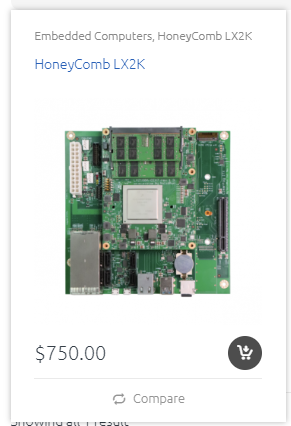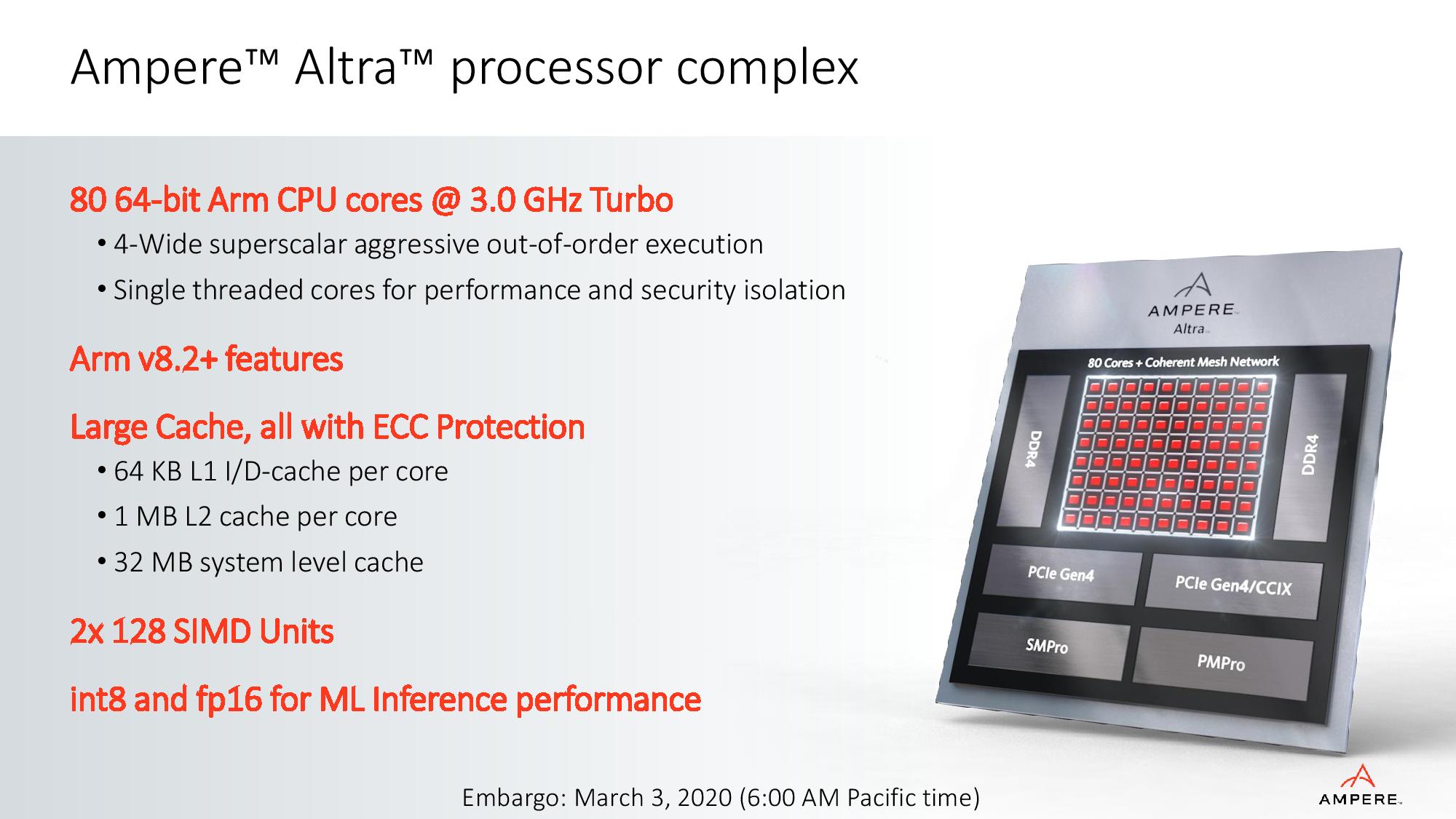Avantek's Arm Workstation: Ampere eMAG 8180 32-core Arm64 Review
by Andrei Frumusanu on May 22, 2020 8:00 AM ESTConclusion - All Eyes on an Altra System
Overall, my expectations of the eMAG Workstation at the beginning were in my view quite realistic, but I can’t help but still feel a bit underwhelmed by the actual experience of the system.
Yes, it’s incredibly important to have an SBSA system that boots generic OS images – and this probably remains the single biggest advantage of the eMAG to date. The problem is that even accounting for all those advantages, the aging CPU’s lacklustre performance just doesn’t add up to the extremely high cost of the system.


Ampere eMAG Workstation vs HoneyComb LX2K Pricing
If you’re a developer who needs to work on hardware enablement and make use of the SBSA system for software development, then you probably won’t need to be reading this piece to rationalise the eMAG Workstation, you probably already have one.
For the general populace, there’s better value Arm alternatives out there, even if SBSA is to be compromised.
Ampere Altra: 80 High-Performance Cores

What’s actually more important than the current generation eMAG Workstation is the possibility of Avantek and Ampere creating an updated successor based on the new Altra processor.
Amazon has already proven that Arm’s Neoverse-N1 CPU cores performs extremely well, and Ampere’s implementation with 80 cores and higher up to 3GHz clock speeds should pretty much outperform the cloud-provider’s chip.
From a software perspective, the eMAG Workstation is great. Iterating on that aspect, updating the hardware with the newest Ampere chip, and improving the cooling solution to something that’s quieter in an office environment, Avantek could see a ton of success with such a system, finally turbo-charging the Arm software ecosystems and finally giving developers the machines they’ve been demanding for years.
Avantek told us they’re willing to build such a system as long as there’s sufficient demand for it. I think the demand is there, we just need more awareness and for the hardware to deliver on its performance.
Related Reading:
- Arm Development For The Office: Unboxing an Ampere eMag Workstation
- Next Generation Arm Server: Ampere’s Altra 80-core N1 SoC for Hyperscalers against Rome and Xeon
- 80-Core N1 Next-Gen Ampere, ‘QuickSilver’: The Anti-Graviton2
- Arm Server CPUs: You Can Now Buy Ampere’s eMAG in a Workstation
- Ampere eMAG in the Cloud: 32 Arm Core Instance for $1/hr
- Arm Announces Neoverse N1 & E1 Platforms & CPUs: Enabling A Huge Jump In Infrastructure Performance










35 Comments
View All Comments
vFunct - Friday, May 22, 2020 - link
They really need ARM systems that are a little higher than Raspberry-PI but a little lower than x86, perhaps in the $100-$200 price range, for personal network appliances.Death666Angel - Friday, May 22, 2020 - link
I'd be interested in what you would use that one for? And why exactly those specs? Lower power than x86 at "good enough" performance levels? If that is the base, why not do an undervolted / down clocked x86 build? Ryzen can get to some pretty great voltage/frequency levels. :D Or is it the ATX form factor as well? That one is a bit trickier, either go with a 12/19V native motherboard or get a nice pico PSU with ATX cables and a 12/19V input. :) Unless I'm way off base in my assumptions. :Dlmcd - Friday, May 22, 2020 - link
I haven't used an RPi 4 yet but I'd be willing to bet the 4GB variant would meet vFunct's needs.vFunct - Friday, May 22, 2020 - link
Network file server with ZFS, Or, a mail server.Need storage & memory, but don't need intense CPU
vFunct - Friday, May 22, 2020 - link
Network file server with ZFS, Or, a mail server.Need storage & memory, but don't need intense CPU.
Wilco1 - Friday, May 22, 2020 - link
It's worth pointing out for future reviews that GCC 10 is out and shows a 10.5% performance gain on Neoverse N1: https://community.arm.com/developer/tools-software...SarahKerrigan - Friday, May 22, 2020 - link
Doesn't mean much for eMag, though.Wilco1 - Saturday, May 23, 2020 - link
Indeed, eMag is quite old, so it won't benefit nearly as much as the latest microarchitectures.GreenReaper - Sunday, May 24, 2020 - link
The graph at the end suggests that 10.0 was a significant regression for many tests, though, so that should probably be taken with a pinch of salt. <^_^>There are some tests (mostly vectorization-related) where it's really helped, though.
mrvco - Friday, May 22, 2020 - link
Out of curiosity, how would the performance of the eMag compare to a typical single-board ARM computer? My reference point would be the RPi3 or 4, but there seem to be a variety of others ranging up to a couple hundred dollars with (allegedly) 'better' performance than the RPi.